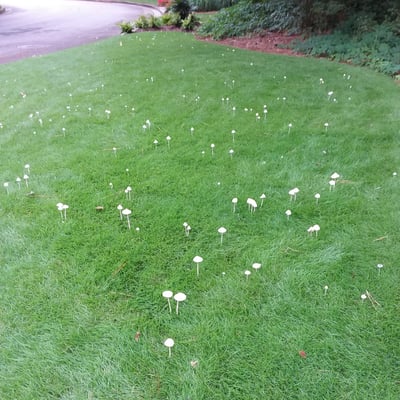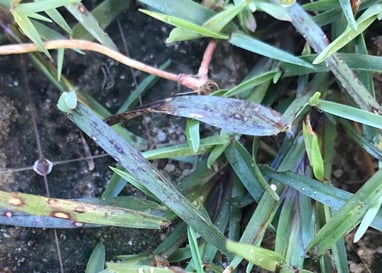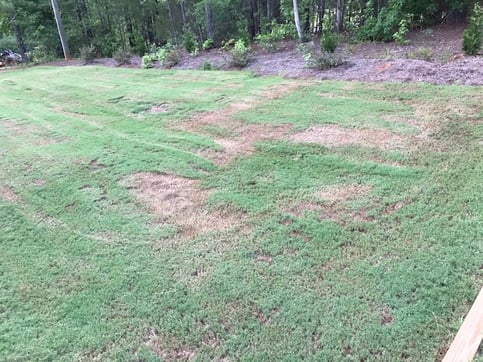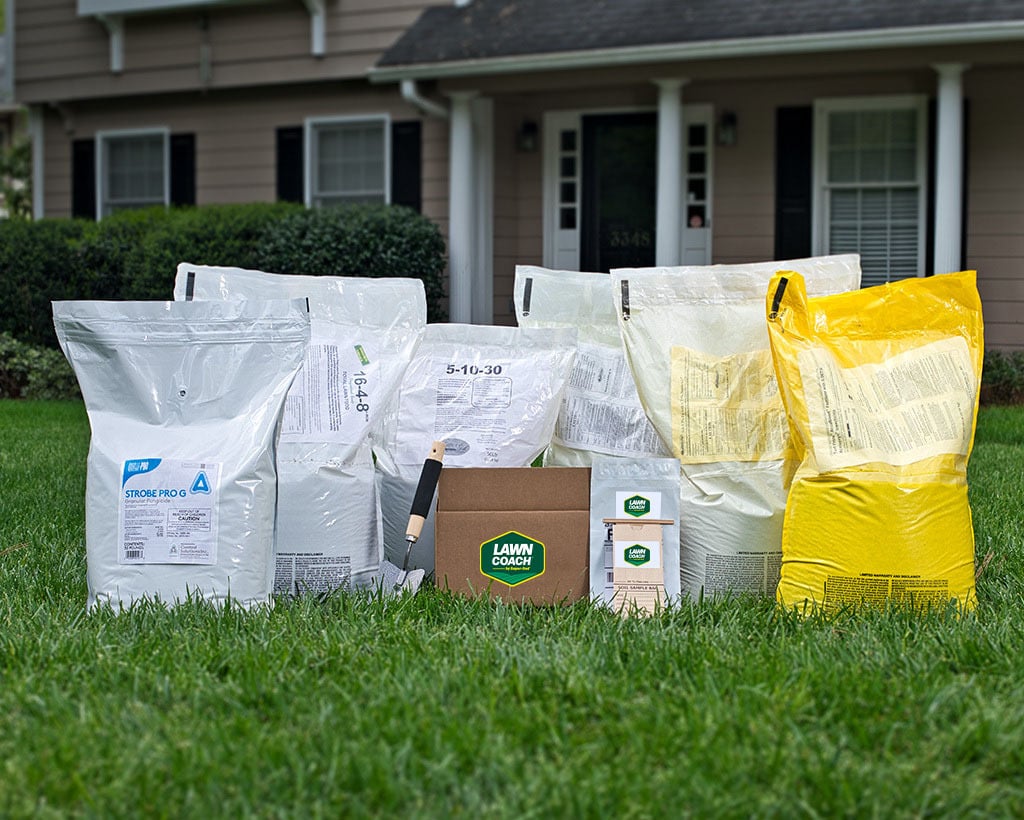

Every summer we get questions about Bipolaris. Here are bullet points for diagnosis and action on this disease.
Diagnosis
- Look on your grass leaf blades for purplish brown to black spots with tan centers (see examples below).
- These are the conditions that trigger bipolaris disease:
- 10 hours per day with water/moisture on the leaves;
- But . . . bipolaris becomes more severe when the ground dries out;
- High Nitrogen fertilization coupled with low Potassium levels;
- We especially see this disease after a lot of Nitrogen is applied, then the lawn is scalped.
- All Bermuda, Zoysia, and Centipede lawns are prone to this disease under the described conditions.
Treatment
- Application of high Potassium fertilizer as soon as symptoms appear. We recommend at least 3 times more Potassium (K) than Nitrogen (N) and have 5-10-30 (N-P-K) in stock.
- Fungicides are also available.
- We carry both the appropriate fertilizer and fungicide in our stores.
Examples

Bipolaris Identification: Look for purplish brown to black spots with tan centers.

Scalping when mowing is a Bipolaris Trigger Condition.
Find your nearest Super-Sod and come by as soon as possible for Bipolaris treatment options.






